Bangkok Early in the Morning
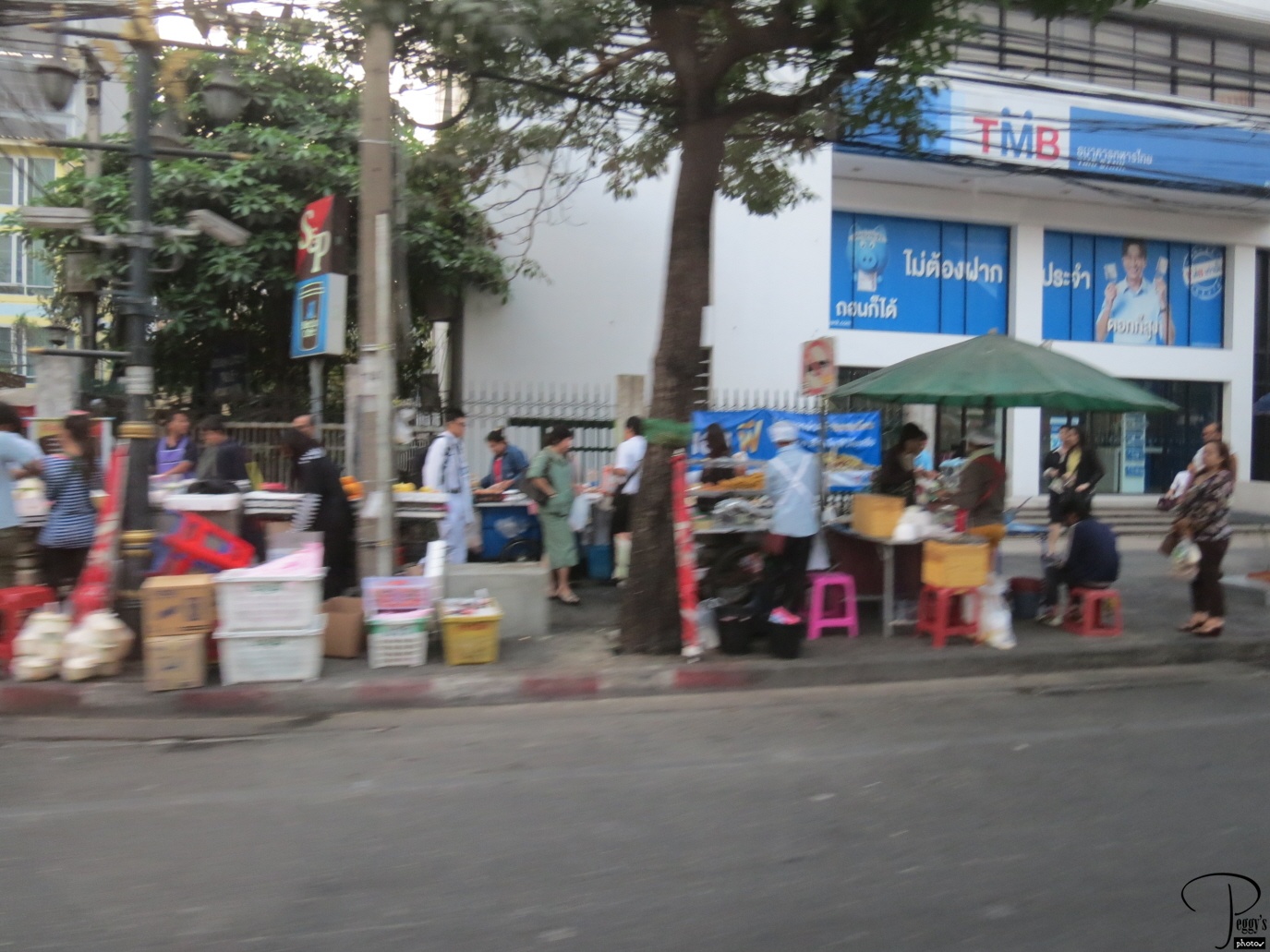
I was picked up at my hotel at 6:10 a.m. to go on an all–day Thai Burma Death Railway Bridge on the River Kwai tour. Luckily, two very tall men from Israel convinced my hotel’s restaurant to open early for breakfast so I didn’t have to rush eating it. Breakfast choices included eggs, bacon and sausage, bread, pastry, fruit, Japanese food, Thai food, salad, etc. People from different countries eat different things for breakfast. You had quite a choice. Photo: Bangkok early in the morning––already in action.

Bangkok Early in the Morning
More of Bangkok in the Early Morning.
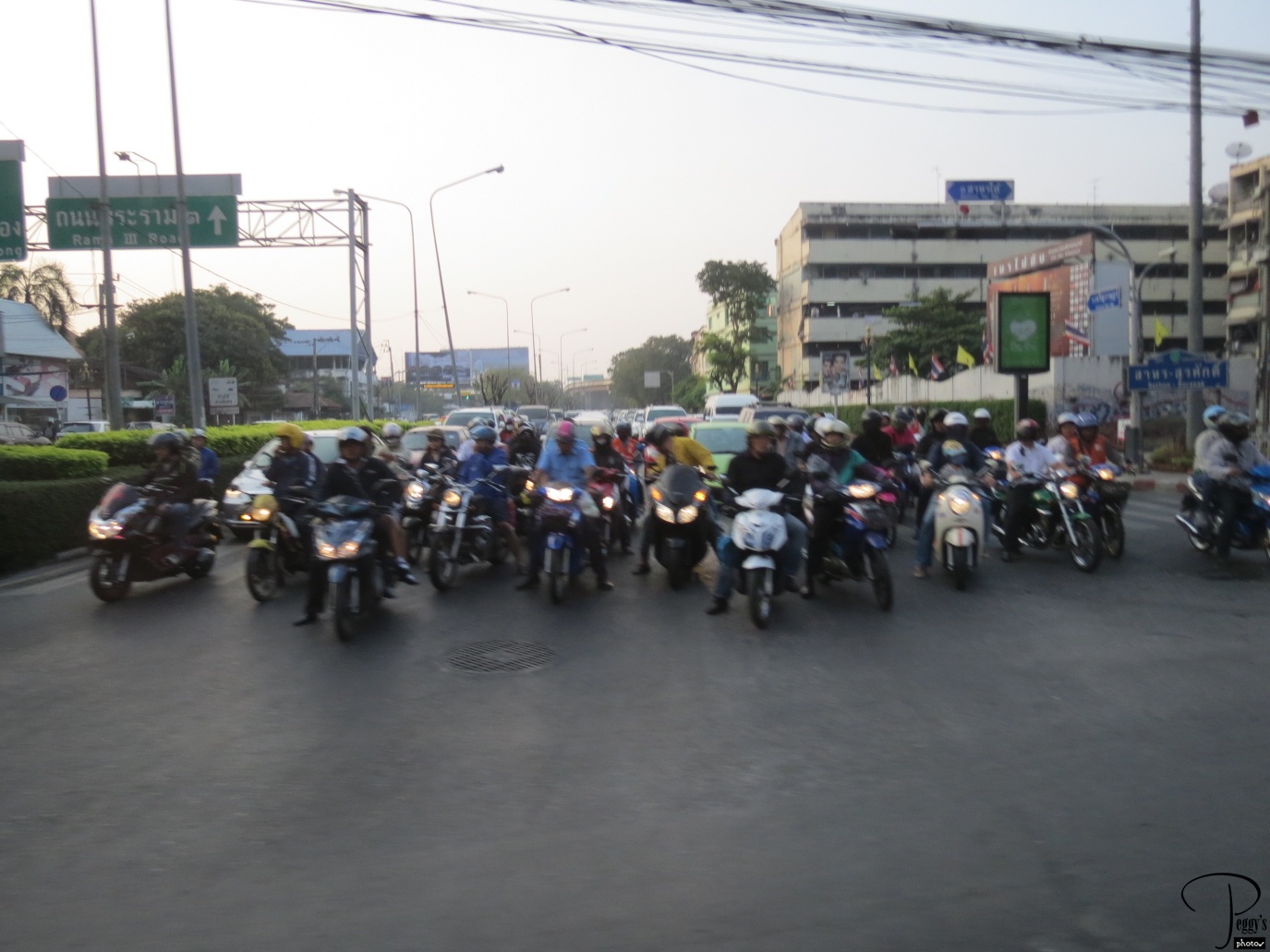
These motorcyclists are ready to take off. We picked up an extended family from Manchester, England, at another hotel: mother, two daughters, and one son in law. We had to wait at another hotel for our last tour mate, a man also from England, coming in a better van for us to travel in. His driver had trouble getting through the congestion caused by the protests. They were all very enjoyable travel mates. I had traveled through England and they all had traveled through the United States so we had much to talk about, though it was sometimes hard for me to understand their British English. Our Thai tour guide had a slight British accent. I was outnumbered.

More of Bangkok in the Early Morning.
Leaving Bangkok
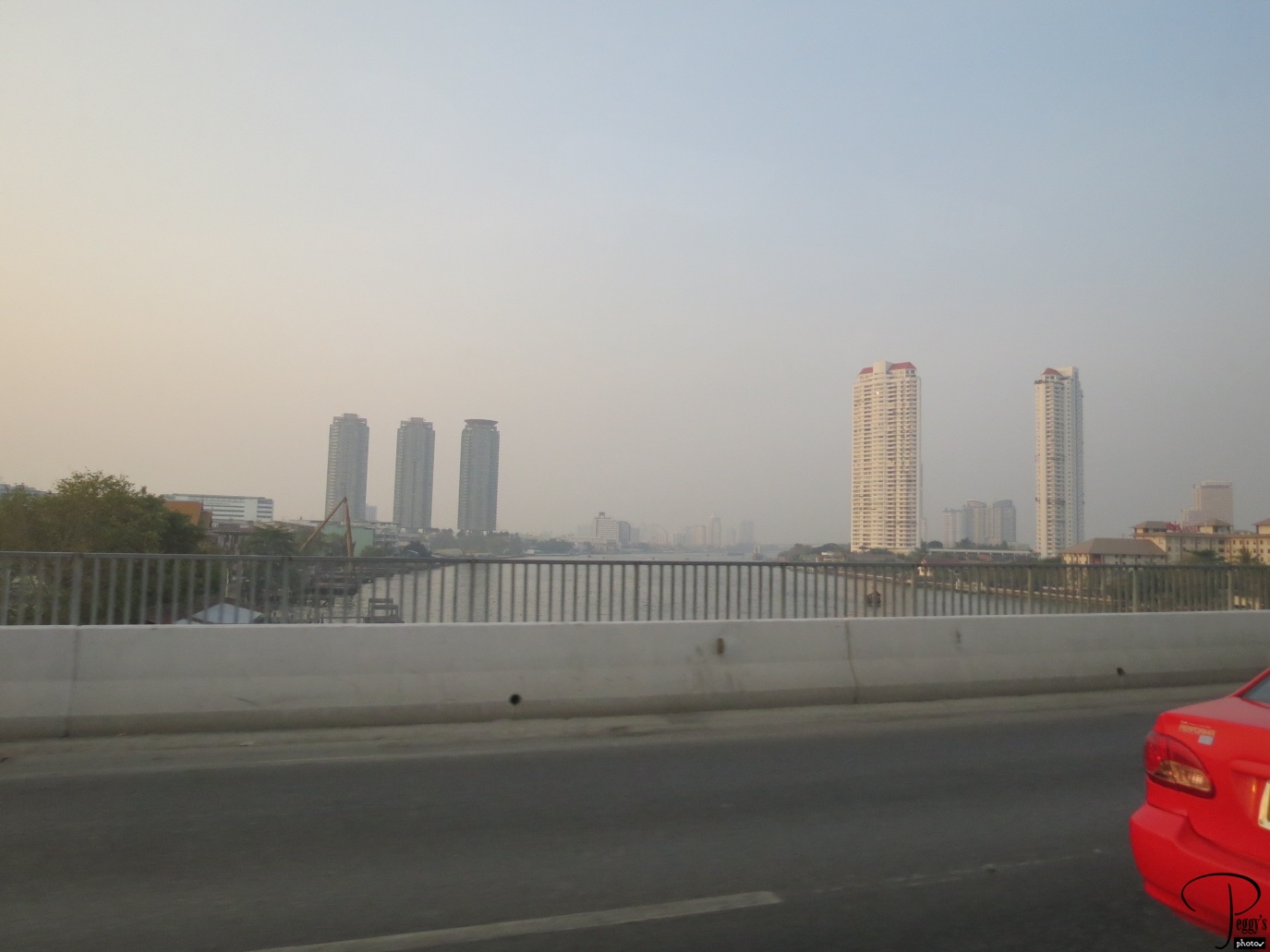
The condition of the sky in Bangkok shown in this photo is called by the Thais “winter haze,” but it really is just another name for air–pollution. Thailand’s air pollution doesn’t come just from motor vehicles but also from crop burning and pollution blowing in from other countries. I wasn’t bothered by it (how could a person from Los Angeles be?), but some people on my Gate 1 tour were complaining of sore throats and irritated eyes.

Leaving Bangkok
On the Road
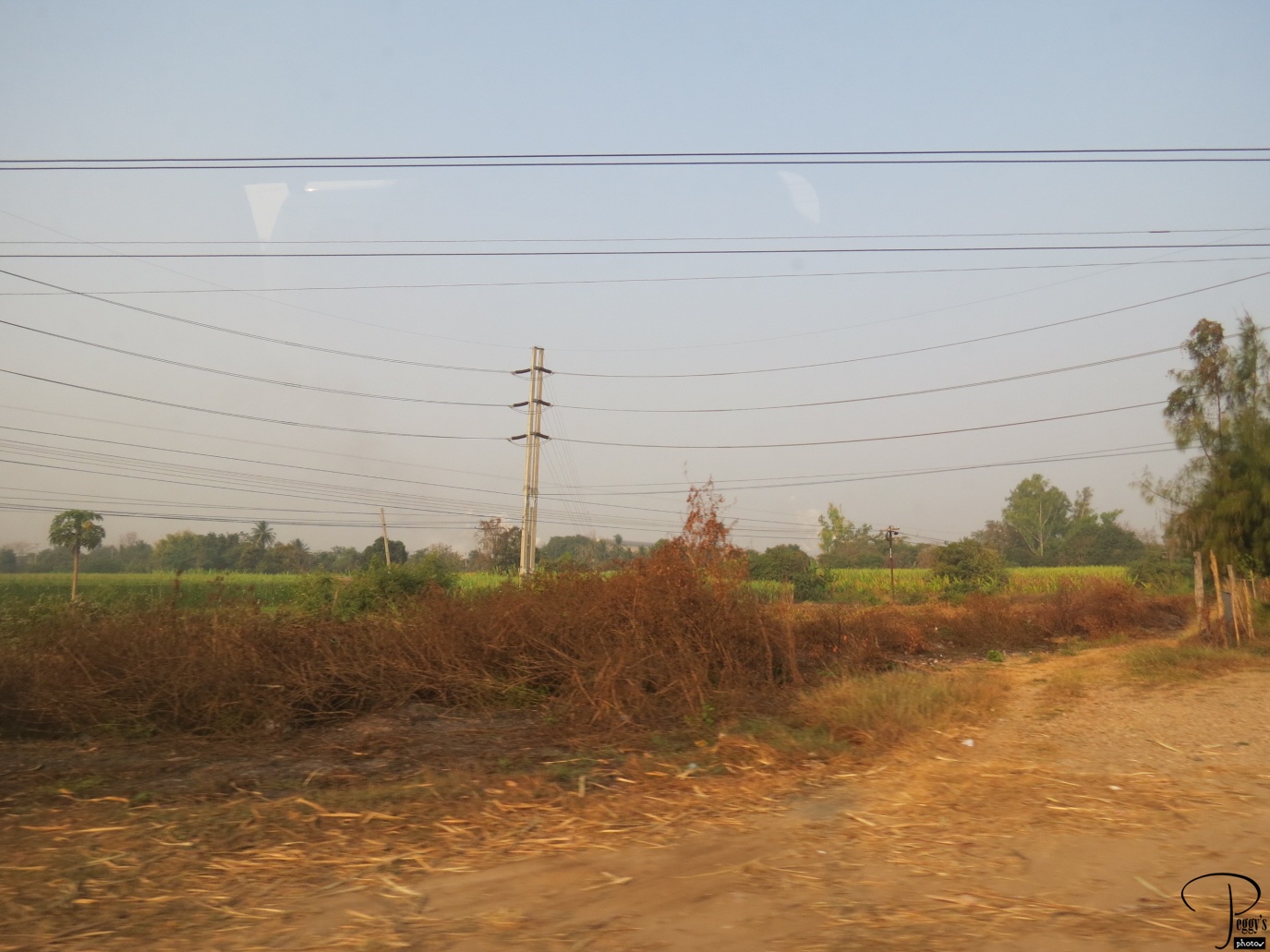
It would take us 2 hours to our destination. Once out of Bangkok, there was no traffic congestion and the roads in Thailand are in very good condition. The scenery was mostly rural.

On the Road
On the Road
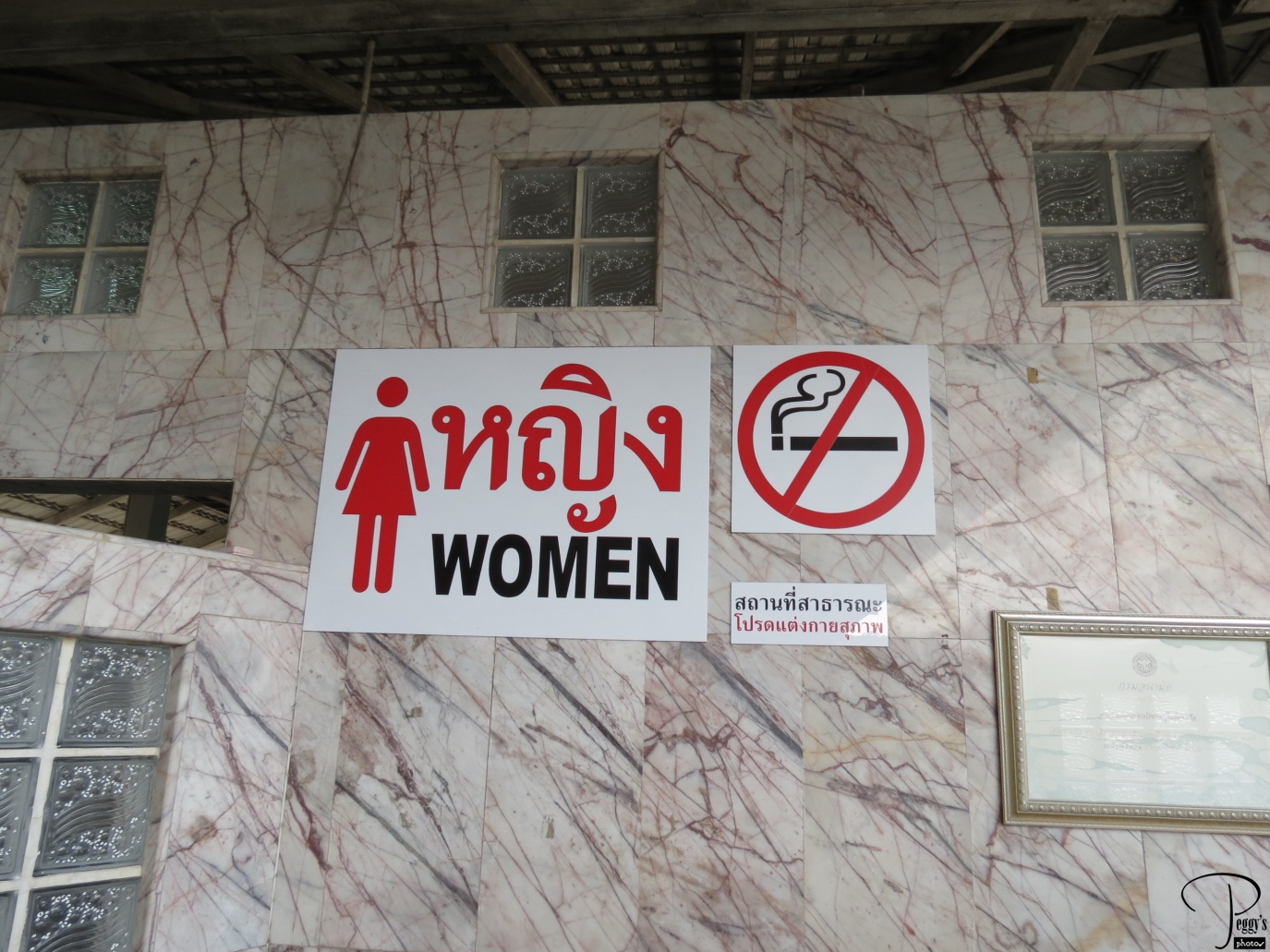
At a rest stop. English–speaking people are lucky in Thailand as most signs are in both Thai and English, but we might have been able to figure this one out. Western toilets available.

On the Road
On the Road

If you want to know how “men” is spelled in the Thai language.

On the Road
On the Road
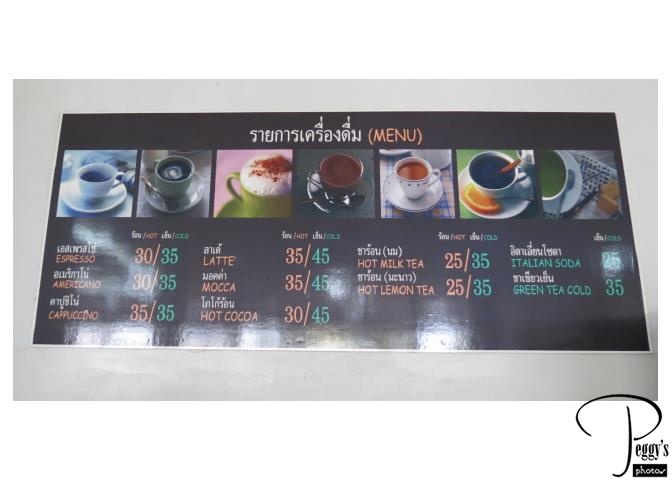
Foods and drinks could be bought here. I had a cappuccino for 35 baht (about $1.30). Anything made with Thai coffee is very good. Expresso, Americano, latte, mocha, cocoa, tea, and Italian soda were also available.

On the Road
At the Rest Stop
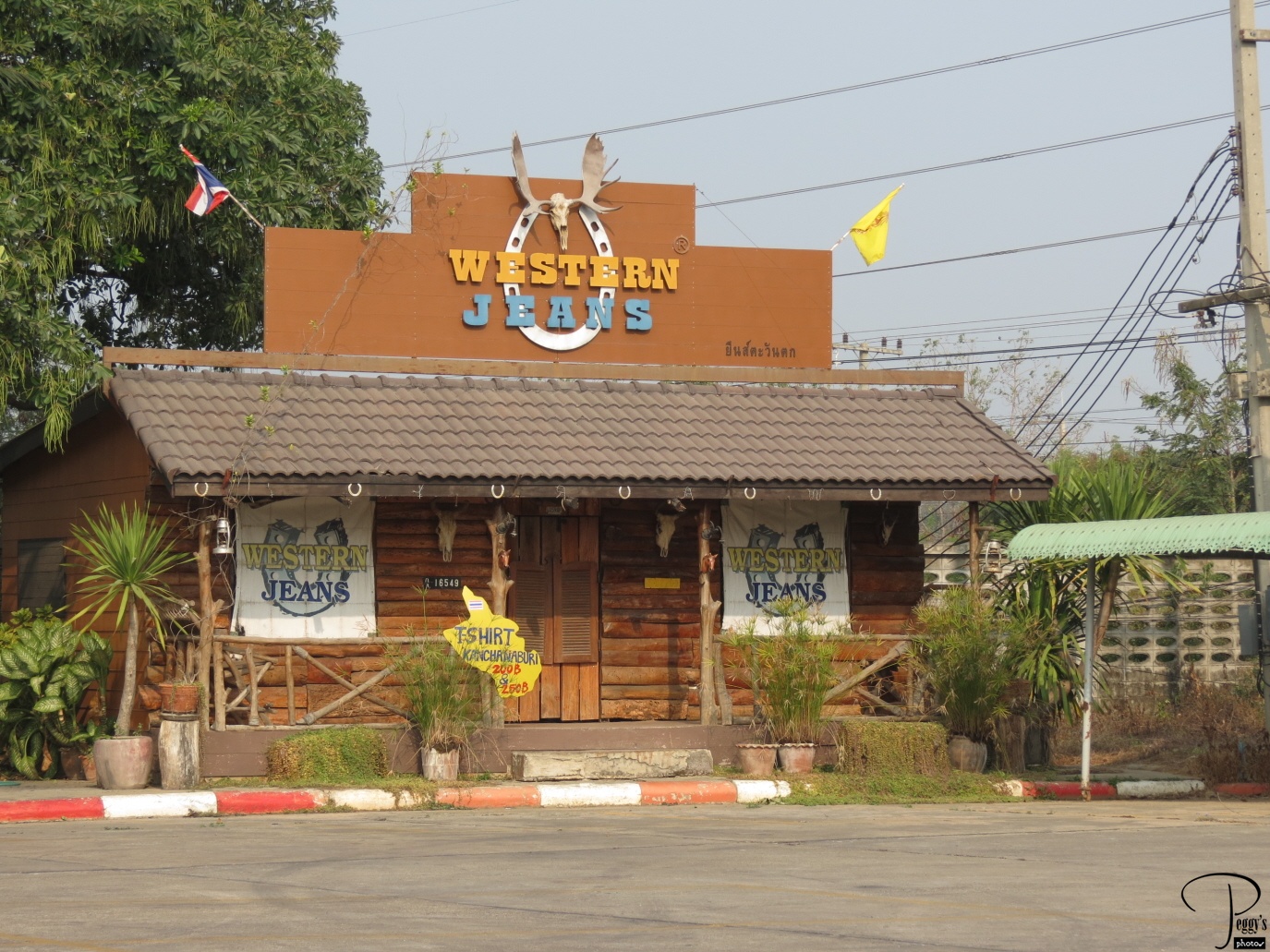
A Western Jeans store. You see much of America in Thailand.

At the Rest Stop
The Kanchanaburi War Cemetery
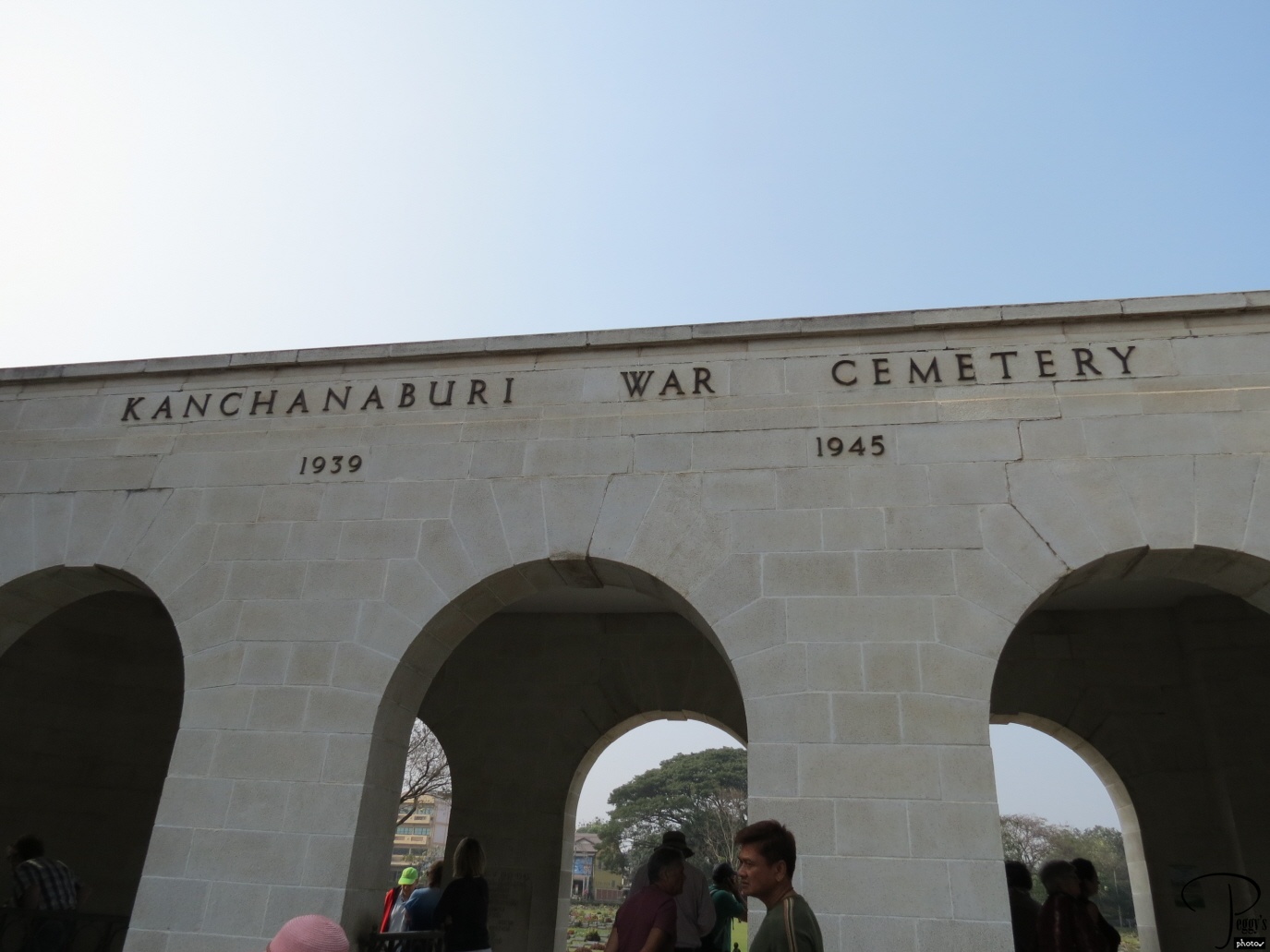
Our first stop and a very emotional one. There are three POW cemeteries in this area. In this one, there are 3,585 British, 1,896 Dutch, 1,362 Australian, 12 members of the Indian Army, 2 New Zealanders, and 1 Canadian buried. These are the POWs who didn’t survive the camps in which they were forced to build the Thai–Burma Railway (also called the Burma Railway, the Death Railway, and the Burma–Siam Railway). No Americans are buried in these cemeteries as their remains were interred in the United States.
The World War II history of Thailand is complicated, but a short version: Thailand was afraid of a Japanese conquest of it, so when the Japanese asked to be let into Thailand to build the Thai–Burma Railway, Thailand accepted. Under pressure from the Japanese, Thailand declared war on the Allies. However, it never was at war with the United States as the Thai envoy who was to deliver the Declaration of War to the U.S. refused to do so. Thailand got tired of the Japanese and sided near the end of the war with the Allies.
Japan needed a land route to supply their forces in Burma (now Myanmar). They had already won a war against the British in Burma. The sea route they were using had become risky due to Allied bombing and submarines. The Japanese decided to use a route for their railway that was surveyed by the British at the beginning of the 20th century. The British decided not to build it because of the hilly jungle terrain and its many rivers to cross. The Japanese needed workers to build it and used both 180,000 Asians and 60,000 Allied POWs––British, Australian, American, Dutch, etc. The conditions for the workers and prisoners were deplorable and long work days were required even for very ill men. Construction began at both ends in June 1942. By October 1943, the two sections met at a great cost of human life. About 90,000 of the Asians and 12,399 of the Allied POWs died while working on the railway. This is why it is called “The Death Railway.”

The Kanchanaburi War Cemetery
The Kanchanaburi War Cemetery

A view of the very well kept up and beautiful war cemetery.

The Kanchanaburi War Cemetery
The JEATH War Museum
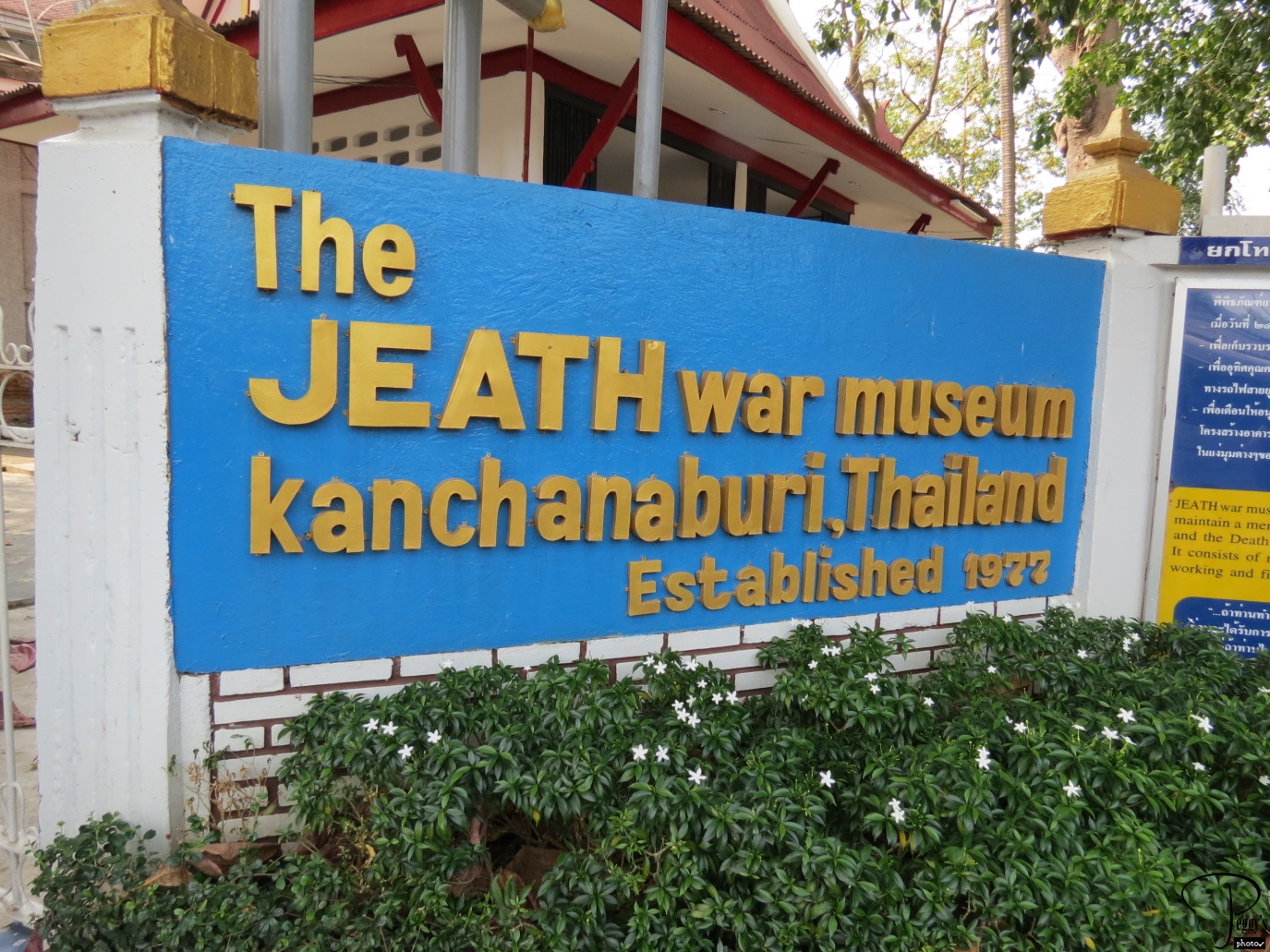
Our next stop was at the JEATH War Museum located on a Buddhist temple’s grounds. One part of the museum is a replication of the bamboo huts that the POWs lived in with very gruesome and disturbing photos of the conditions that the POWs endured. The photos do not jibe with the portrayal of a POW camp in the movie “The Bridge on the River Kwai.” The movie sugar–coated the conditions. The movie was based on the novel “The Bridge Over the River Kwai” by French author Pierre Boulle. I don’t if the portrayal in his book is more realistic. No photos were allowed in the huts.
The letters in JEATH stand for those who worked on the railway: J for Japanese; E, English; A, Americans and Australians; T, Thais, and H, Holland (Dutch).

The JEATH War Museum
The JEATH War Museum
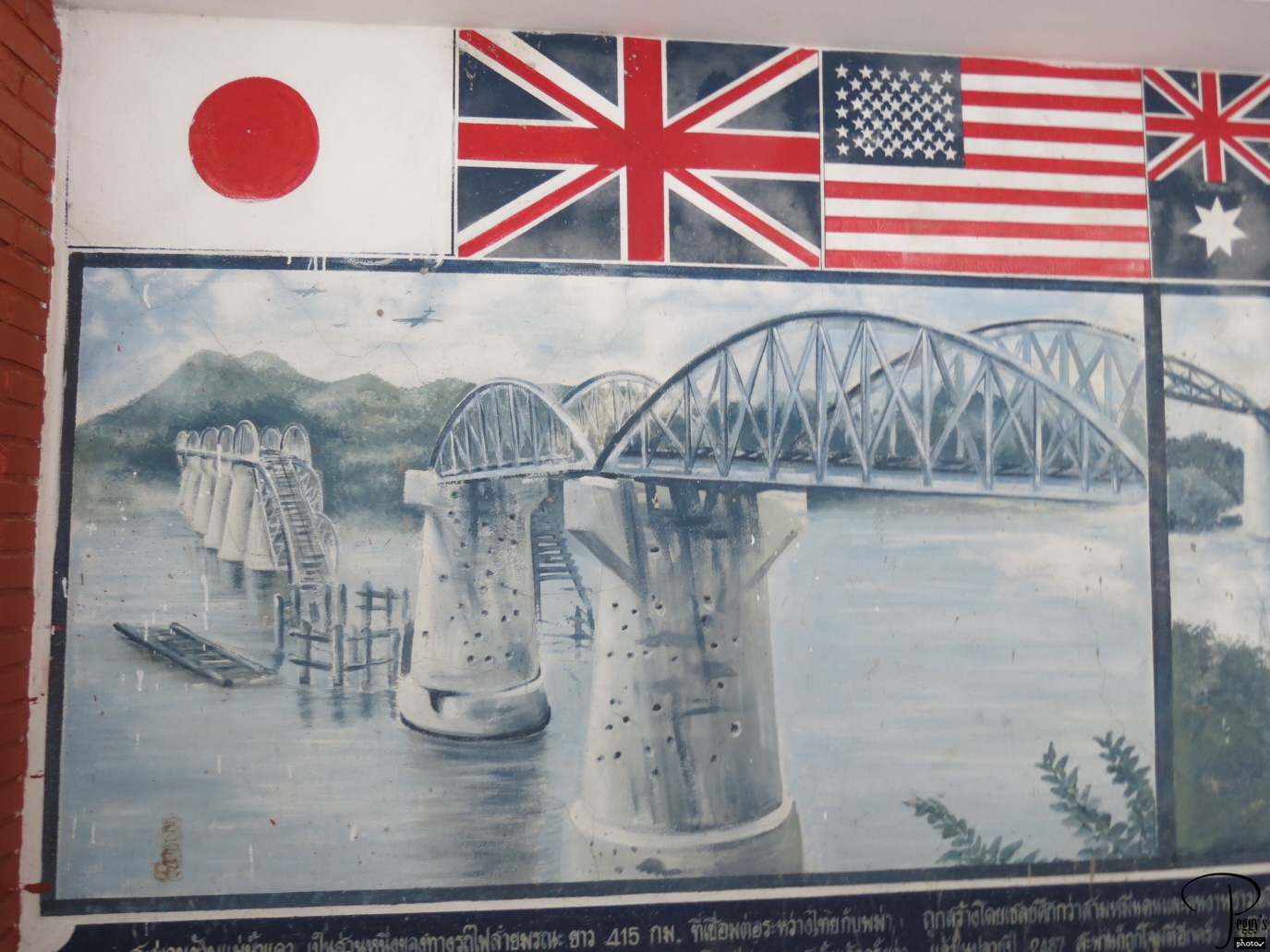
One of the photos in another part of the museum that I was allowed to take a photo of (or at least I think I was). There were two bridges over the River Kwai––one wooden one and this one, built of cement and steel. The photo shows the result of Allied bombing. After the war, the bridge was restored and is still in use today as part of the Death Railway.

The JEATH War Museum
The JEATH War Museum
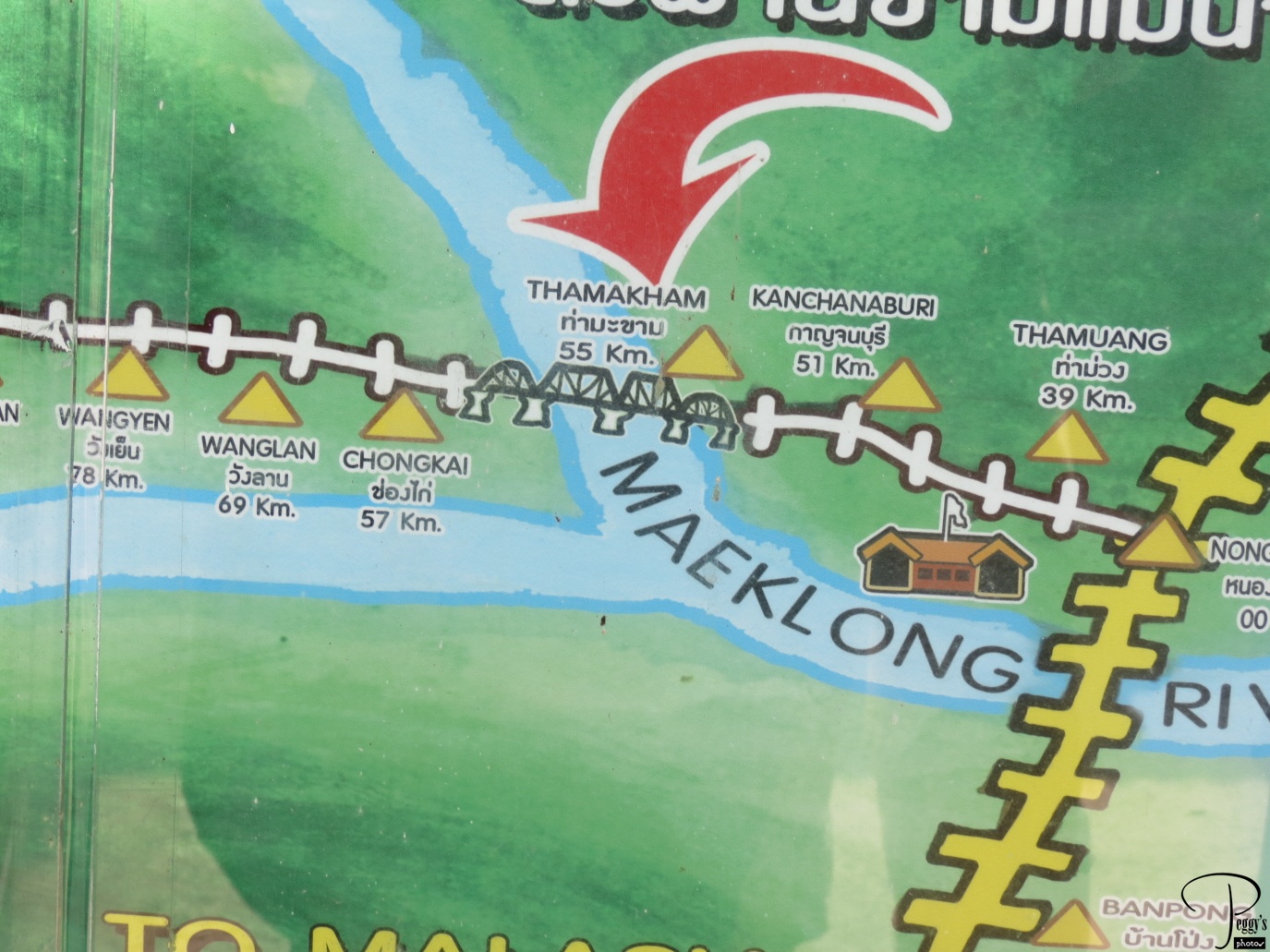
Several intesting maps were outside the museum buildings. This one shows where the Bridge Over the River Kwai was built––actually not over the River Kwai but over the Maeklong River. Pierre Boulle did not visit here and did not realize he used the wrong name of the river in his book. However, the Thais knew that tourists would come to view the bridge and they would know the river as the River Kawi, so they renamed the river to go with the book and the movie.
I put my photos of the Kanchanaburi War Cemetery and the JEATH War Museum on a slideshow. Go to
http://www.peggysphotos.com/death–railway–pow–cemetery–museum/
or Slide Shows, Asia, Thailand, “Death Railway POW Cemetery and Museum.”

The JEATH War Museum
Speed Boat Ride on the River Kwai
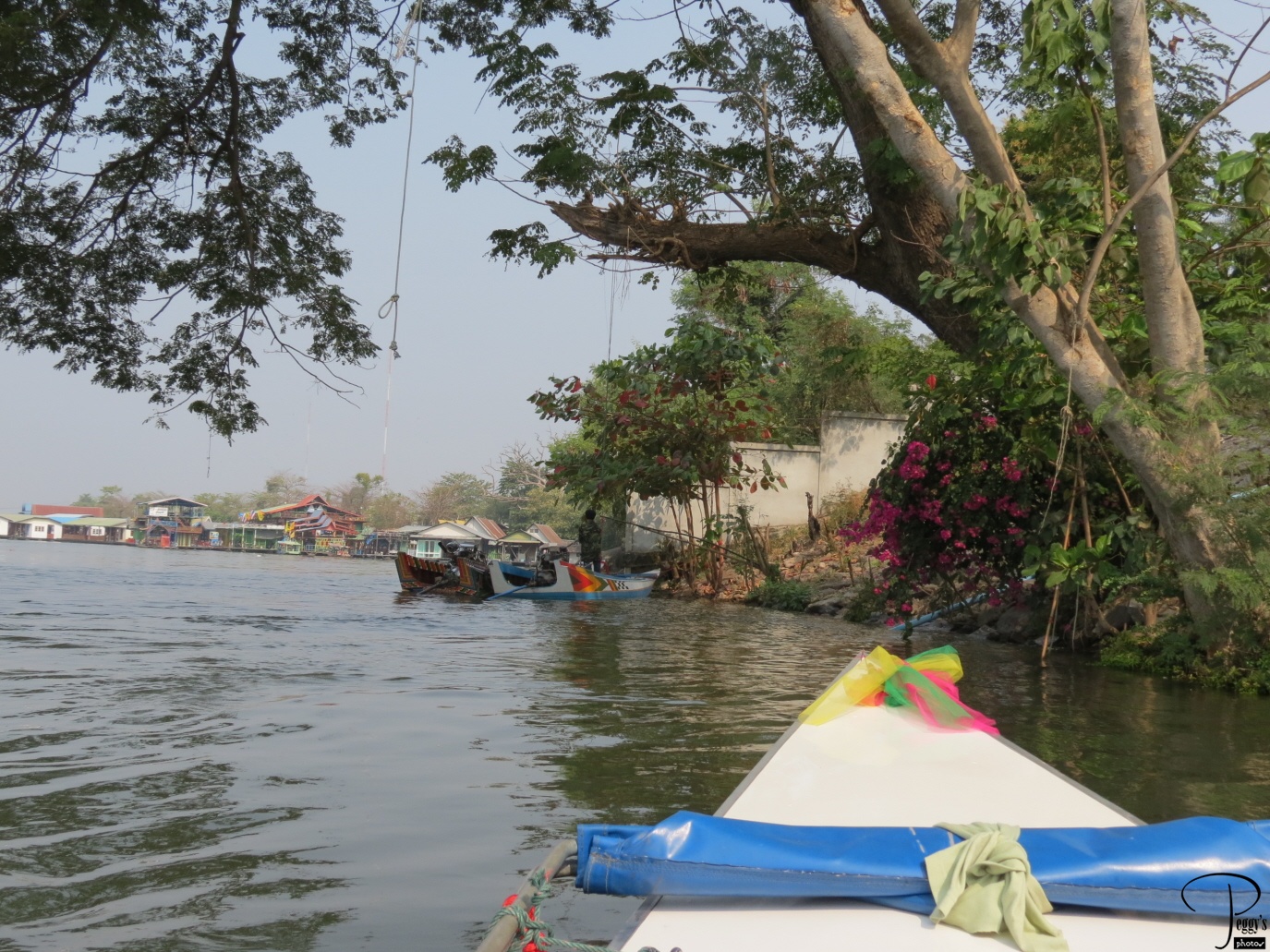
To get from the JEATH War Museum to the Bridge Over the River Kwai, we took a very fast ride on a long–tail boat.

Speed Boat Ride on the River Kwai
The Bridge Over the River Kwai
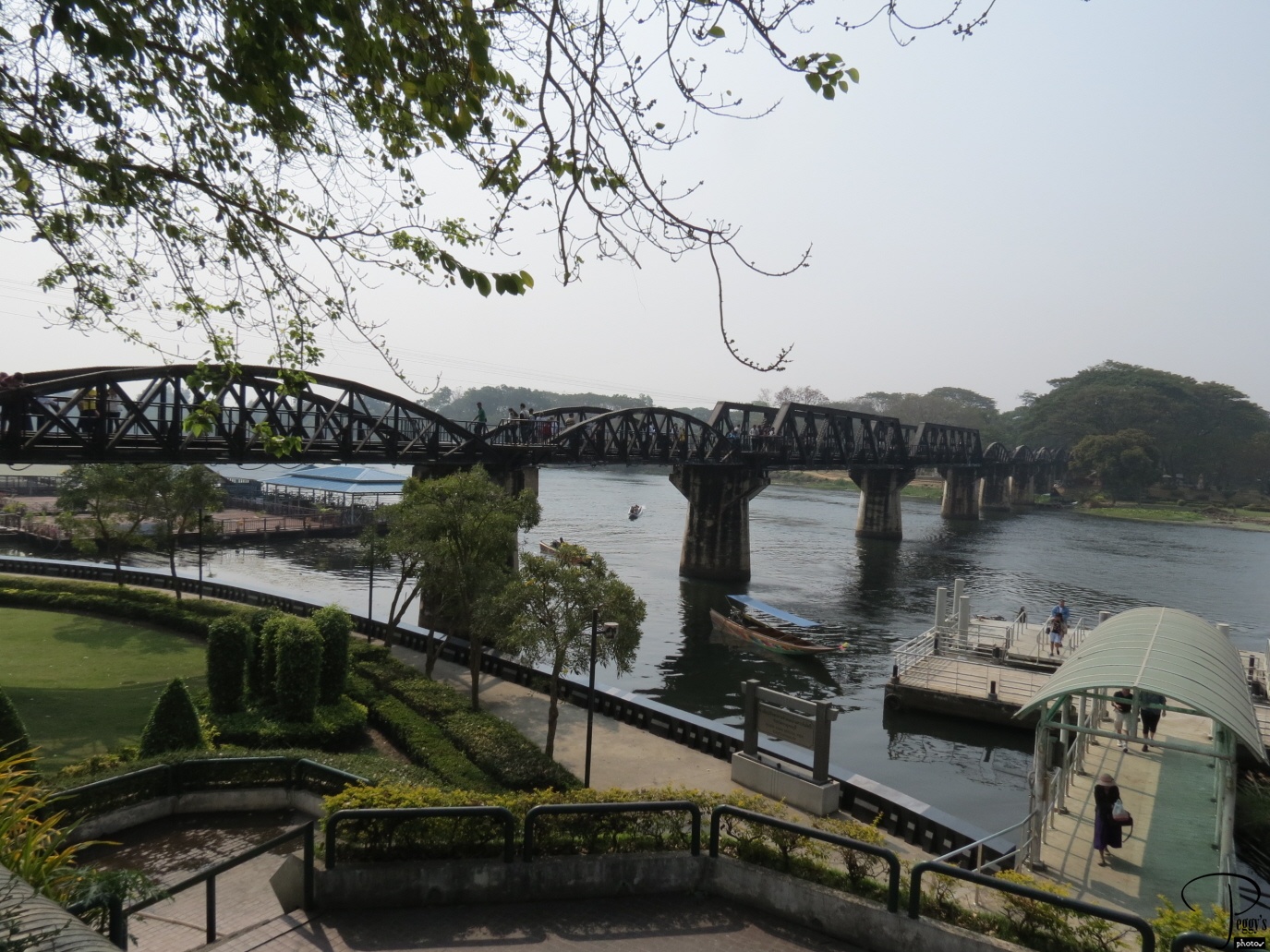
The Bridge Over the River Kwai. The other bridge, the wooden one, is no longer standing.

The Bridge Over the River Kwai
Waiting for the Death Railway
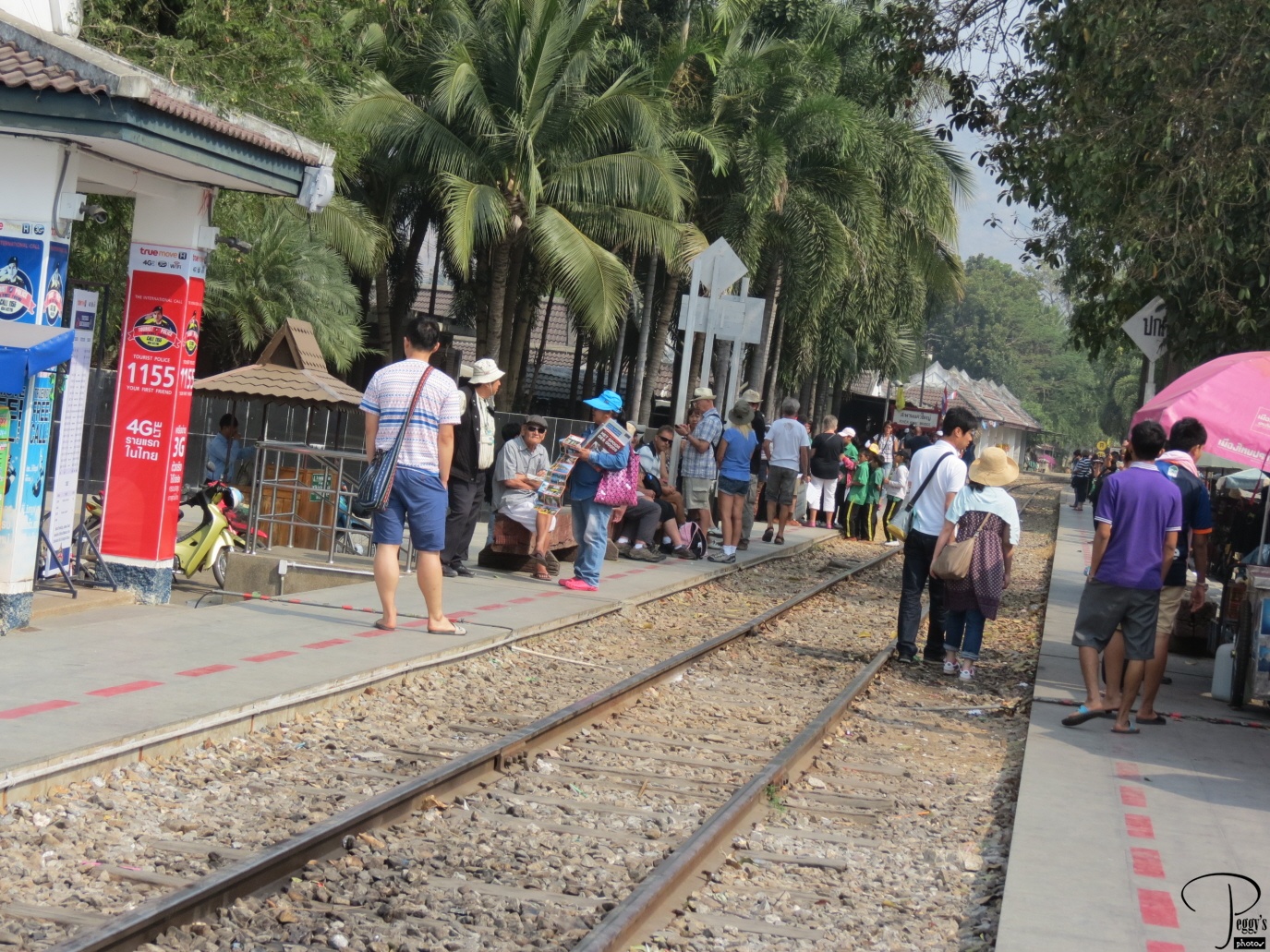
People waiting the arrival of the Death Railway that would go over the River Kwai.

Waiting for the Death Railway
The Death Railway
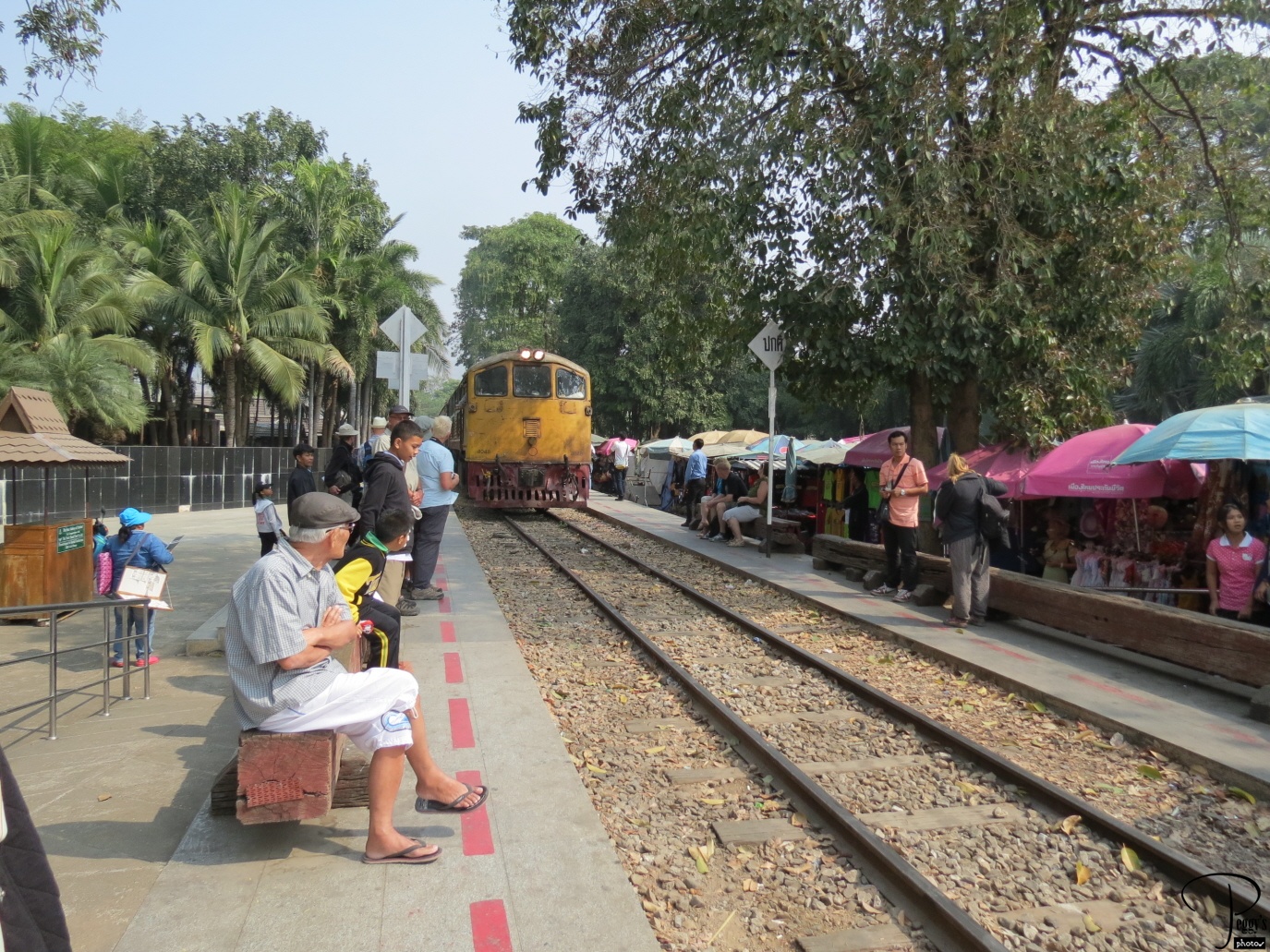
It is arriving. We would be going on it.

The Death Railway
The Death Railway Station
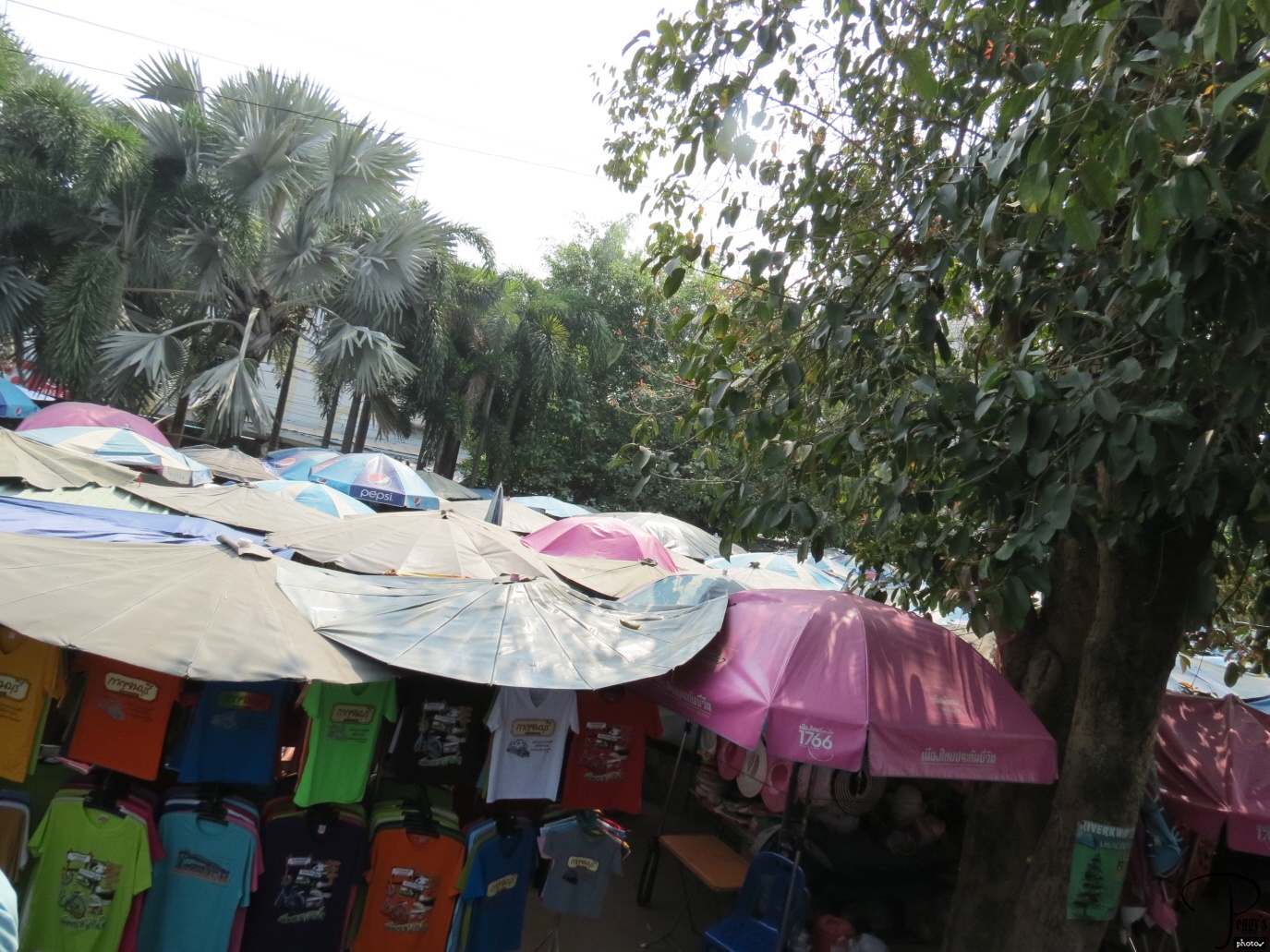
We weren’t given enough time to look what was for sale under these umbrellas.

The Death Railway Station
Taking the Death Railway Over the Bridge Over the River Kwai–Movie
I put the Death Railway going over the bridge on a movie. I also put my photos of our ride on the Death Railway on a slide show: Go to
http://www.peggysphotos.com/river–kwaideath–railway/
or to Slide Shows, Thailand, “River Kwai/Death Railway.”

Taking the Death Railway Over the Bridge Over the River Kwai–Movie
On the Way Home
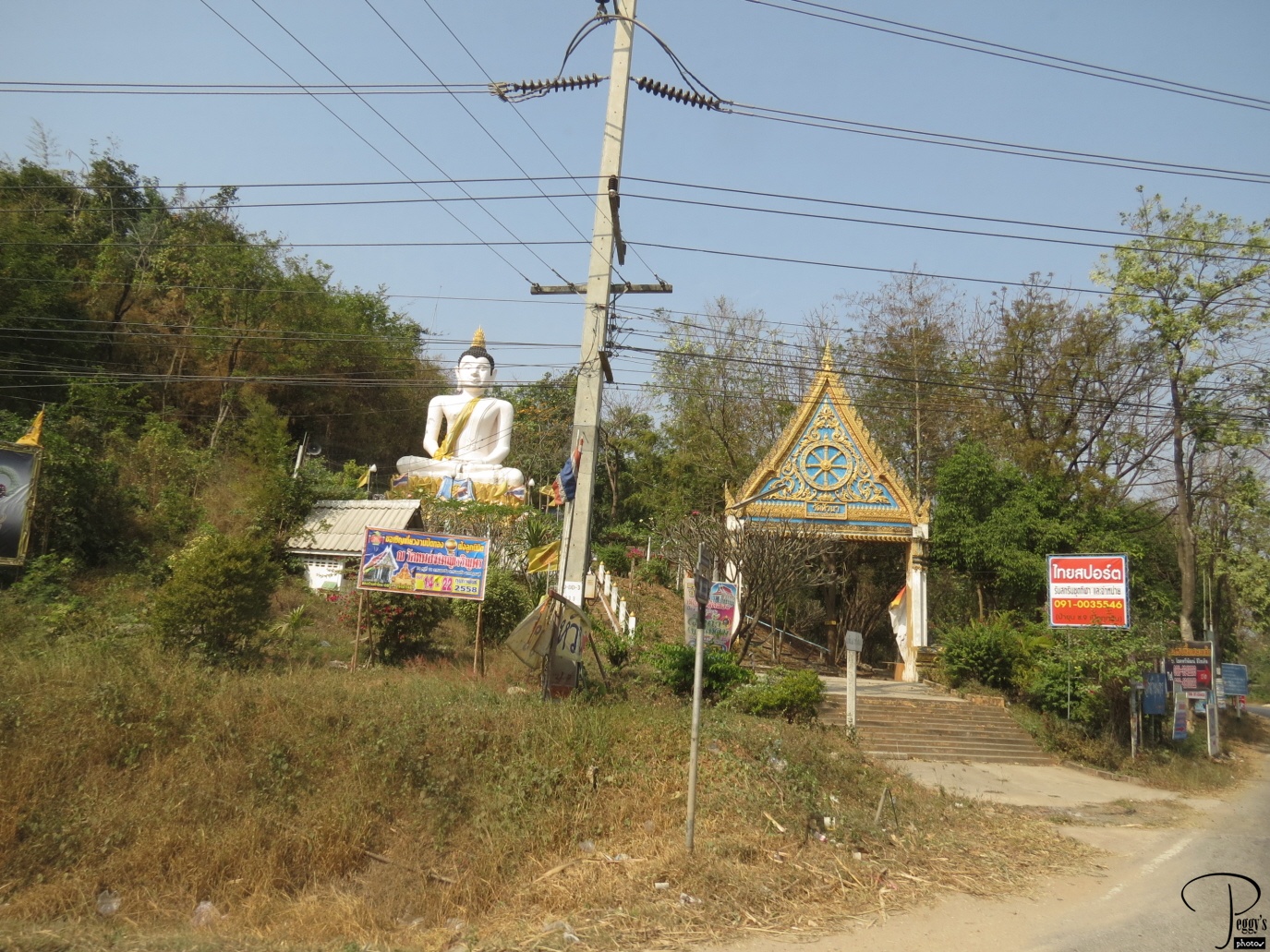
It would take us three hours from where we got off the train to get back to Bangkok. There was an elephant camp nearby and our tour guide asked if anyone wanted to ride on an elephant. We all decided “not today.” It was already a long tour. Photo: seen on the way back to Bangkok.

On the Way Home
Rest Stop
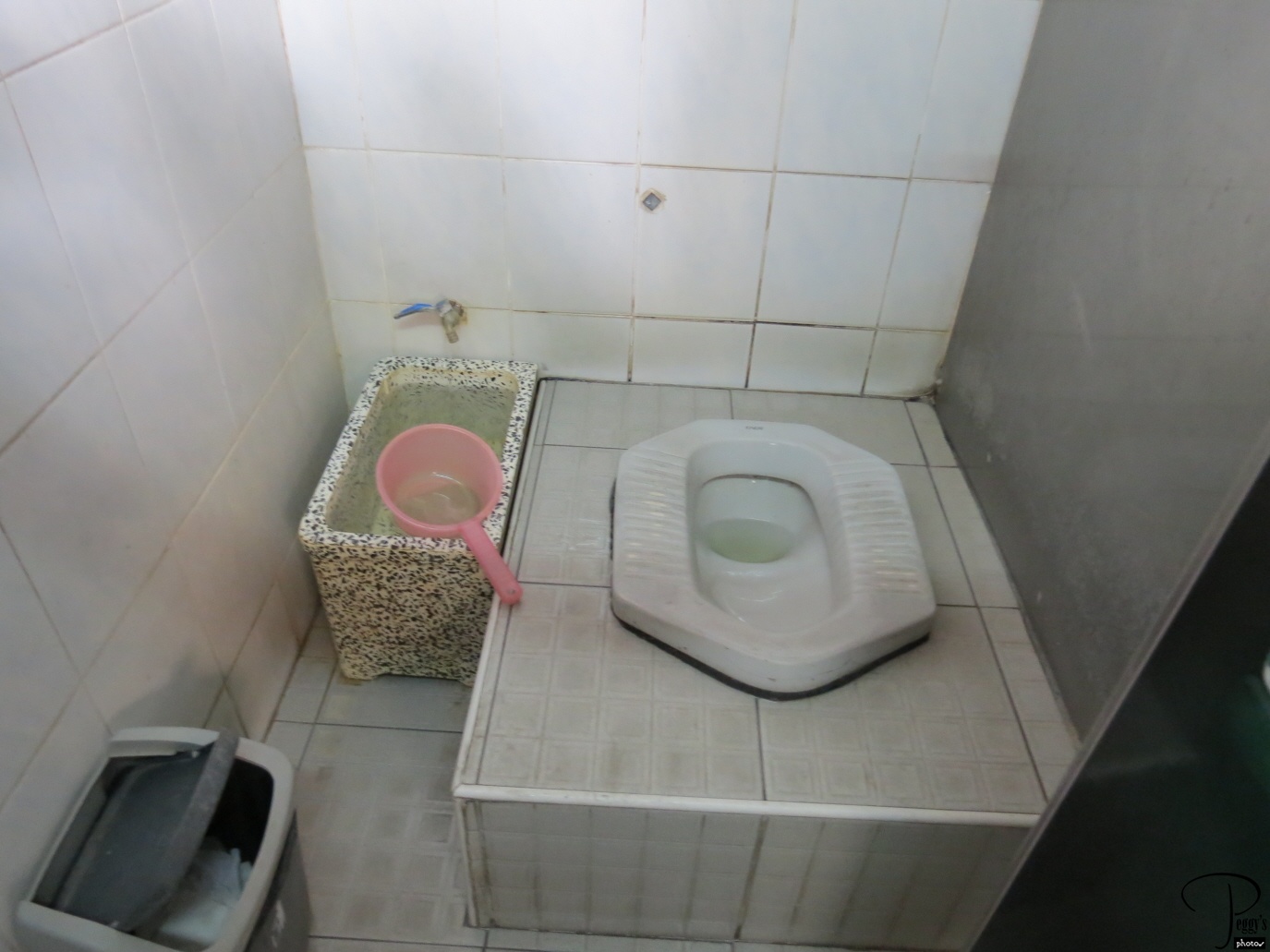
Oh dear, now what do I do? First squat toilet that I’ve seen so far in Thailand. I had to use one once before in Malaysia and I didn’t do well using it. But this one was so very clean, why not just sit on it. It worked. You do need to carry tissue paper in Thailand. On my Gate 1 tour, the bus boy or the bus driver had a box of tissues that we could draw from at each of our rest stops.

Rest Stop
Back in Bangkok

Back in action–filled Bangkok three hours later. The men in the orange vests are motorcycle taxi drivers. Just hop on the back of their motorcycles and they will take you where you want to go for a fee.

Back in Bangkok
Back in Bangkok
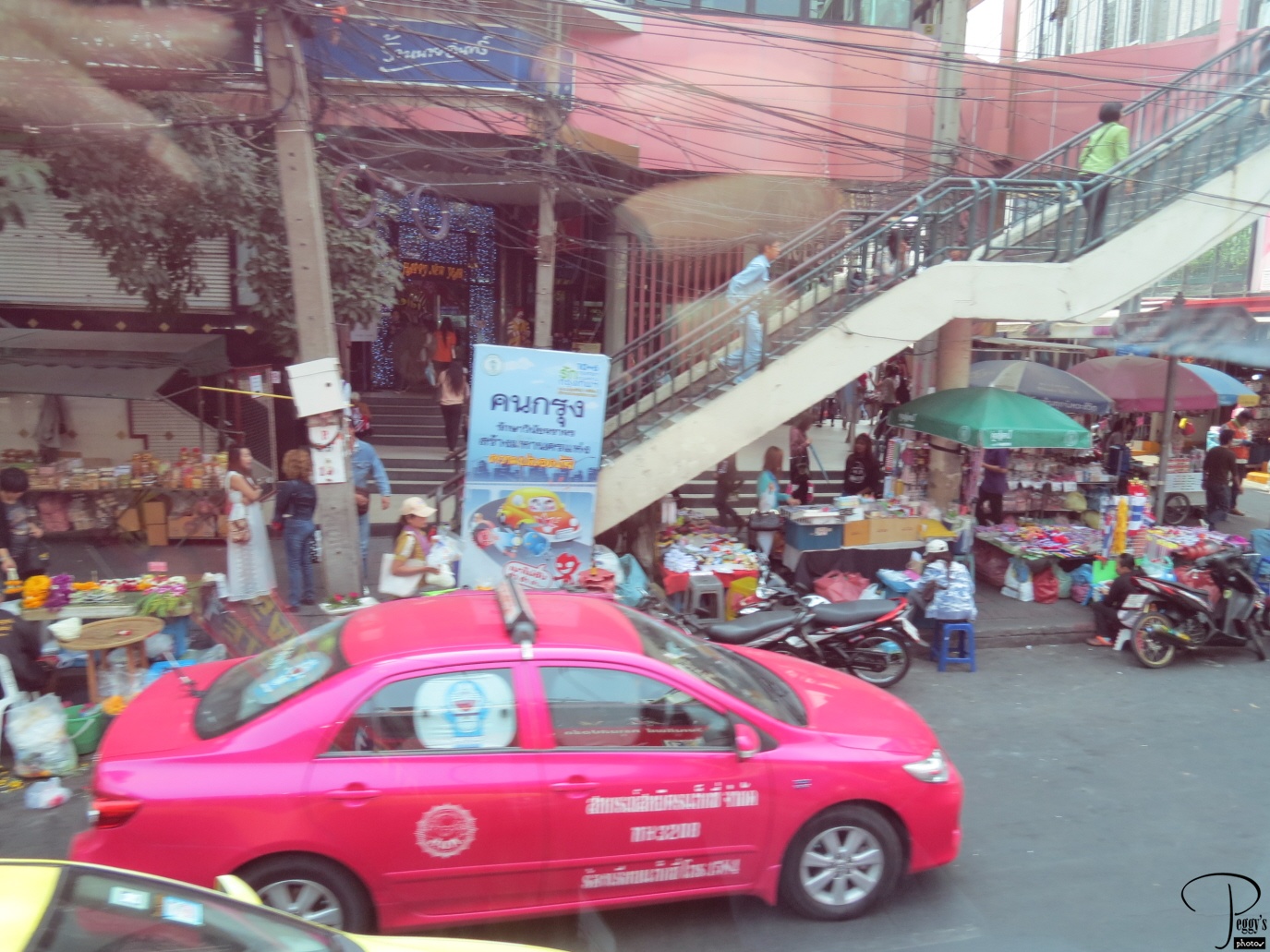
Our tour guide decided he would never get us all back to our hotels without running into very bad traffic congestion due to the protests. He took off with the tour mate he thought would be the hardest to get back––not me but the man from England. They were dropped off at the sky train and the rest of us had a very time–consuming drive back to our hotels––one additional hour.
My Gate 1 tour was starting tomorrow and my two friends from Denver that I was going on the tour with had already arrived, but they had already eaten dinner and I hadn’t, so we decided to meet the next morning.
